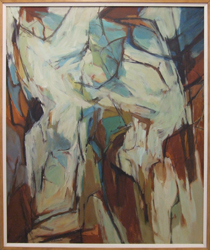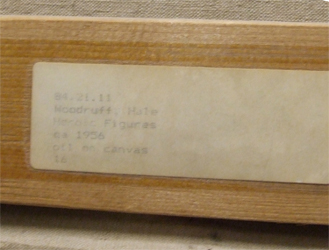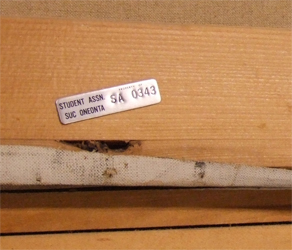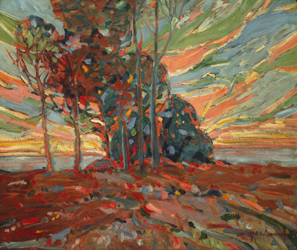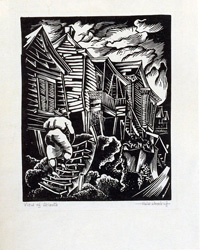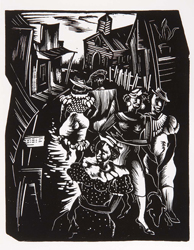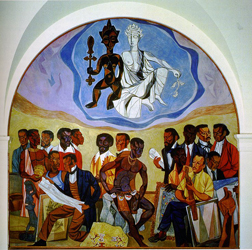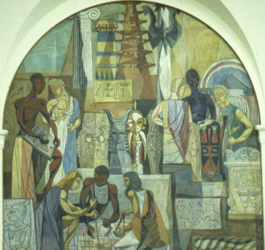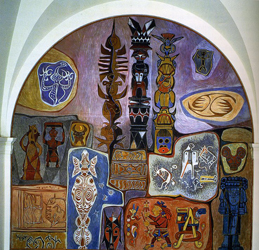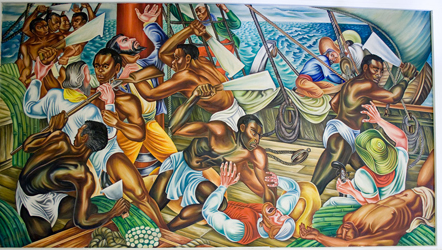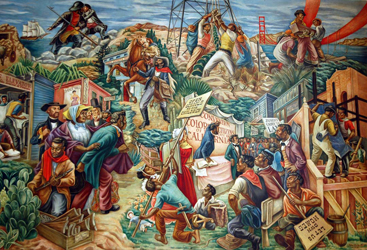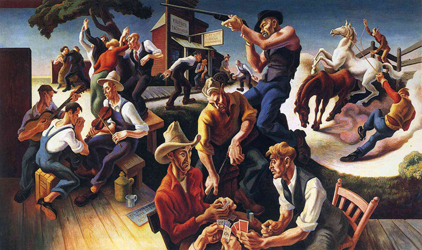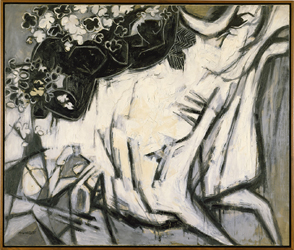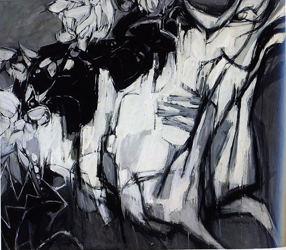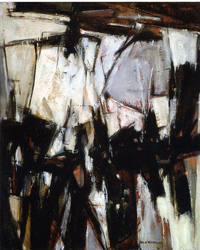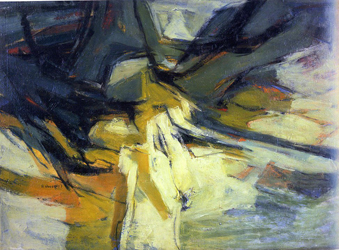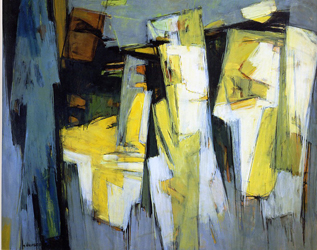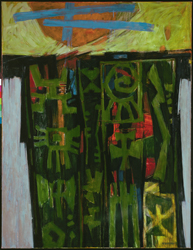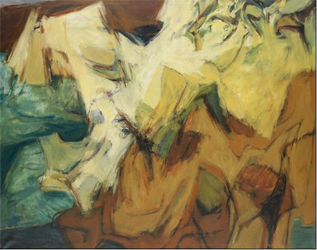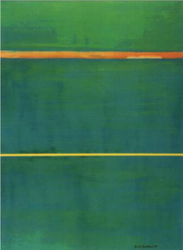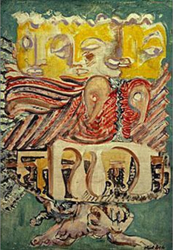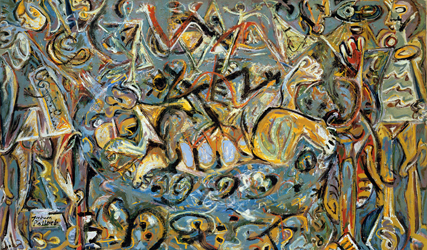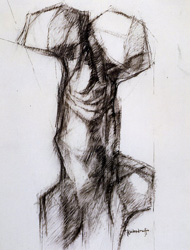Hale Woodruff, Heroic Figures, c. 1956, 58 X 48", State University of New York, College at Oneonta
Belvedere Torso; Belvedere Torso (back); Vesalius; Michelangelo Ignudo; Rubens copy
Art of the Negro: Muses, 1952, 12 X 12', Clark Atlanta University, Trevor Arnett Library.
Mutiny on La Amistad, one of a series of three murals focusing the on the mutiny on the slave ship La Amistad (1839). The mural cycle was one of two that Hale Woodruff made for Talledega College in Alabama. The cycles were commissioned in 1938.
Africa and the Bull, c. 1958, 30X38" Collection of the Studio Museum in Harlem. (Titian)
Celestial Gate, 1953 (recently attributed to c. 1967), 65 X 45 1/2", Spelman College Museum of Fine Art, Atlanta.
Hale Woodruff, Rape of Europa, c. 1958, 51 X 63 1/2"
Sold by Swann Auction Galleries, African-American Fine Art, October 6, 2011, Lot 72 , Estimate: $90,000-120,000. Sold for $90,000.
Barnett Newman, Dionysius,1949.
The title would be a reference to the dichotomy between the Apollonian and Dionysian as articulated in Nietzsche, The Birth of Tragedy. For Nietzsche, the tragic hero of the drama, the main protagonist, struggles to make order (in the Apollonian sense) of his unjust and chaotic (Dionysian) Fate, though he dies unfulfilled in the end. For the audience of such a drama, Nietzsche claimed, this tragedy allows us to sense an underlying essence, what he called the "Primordial Unity", which revives our Dionysian nature - which is almost indescribably pleasurable.
Mark Rothko, Omen of the Eagle, 1942.
Rothko talking about this painting would explain: "The theme here is derived from the Agamemnon Trilogy of Aeschylus. The picture deals not with the particular anecdote, but rather with the Spirit of Myth, which is generic to all myths at all times. It involves a pantheism in which man, bird, beast, and tree-- the known as well as the knowable-- merge into a single tragic idea."
Jackson Pollock, Pasiphae, 1943.
Pasiphaë in Greek mythology was the mother of Minotaur by the white bull sent by Poseidon.
